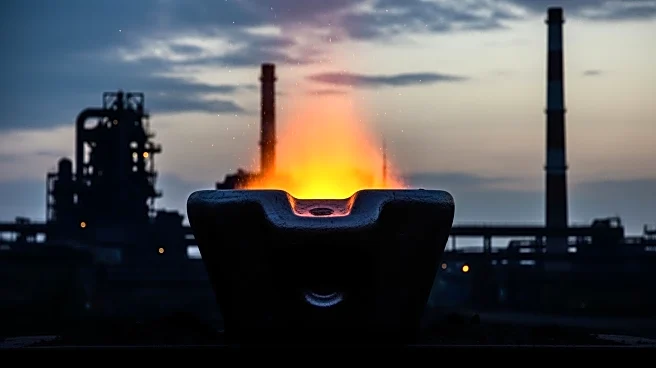What's Happening?
U.S. Steel has announced the resumption of production at Battery 14 of its Clairton plant, a decision that comes after a tragic explosion over two months ago. The incident resulted in the deaths of two individuals and left nearly a dozen others injured.
The Clairton plant, a significant facility in the Pittsburgh area, had halted operations at Battery 14 following the explosion to conduct safety assessments and repairs. The company has now deemed the battery safe for operation, allowing production to restart. This move is part of U.S. Steel's efforts to restore full operational capacity at the plant, which plays a crucial role in the local economy and the steel industry.
Why It's Important?
The resumption of production at Battery 14 is significant for several reasons. Firstly, it marks a step towards normalcy for U.S. Steel and the local community affected by the explosion. The Clairton plant is a major employer in the region, and its operational status directly impacts the local economy. Additionally, the steel produced at this facility is vital for various industries across the United States, including construction and manufacturing. The restart of production also highlights U.S. Steel's commitment to safety and operational efficiency, as the company has taken measures to ensure the plant meets safety standards before resuming operations.
What's Next?
With production resuming at Battery 14, U.S. Steel is likely to focus on maintaining safety protocols to prevent future incidents. The company may also engage with local stakeholders, including community leaders and regulatory bodies, to address any concerns related to the plant's operations. Additionally, U.S. Steel might explore further investments in safety technology and infrastructure to enhance the plant's resilience against accidents. The local community and industry observers will be watching closely to see how U.S. Steel manages the aftermath of the explosion and its impact on the plant's long-term operations.
Beyond the Headlines
The incident at the Clairton plant underscores the broader challenges faced by the steel industry in balancing production demands with safety concerns. As U.S. Steel resumes operations, there may be discussions around the need for stricter safety regulations and oversight in industrial facilities. The event also highlights the importance of emergency preparedness and response strategies in mitigating the impact of industrial accidents. Long-term, this could lead to increased scrutiny of safety practices across the industry, potentially influencing policy changes and technological advancements aimed at preventing similar incidents.













